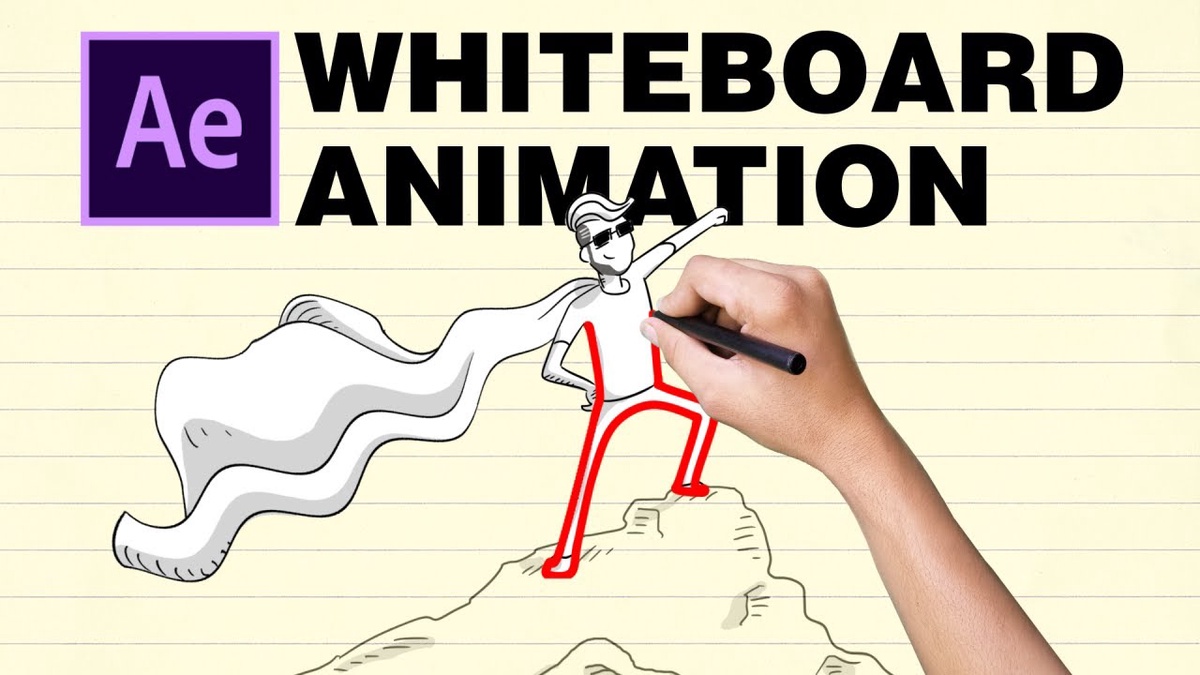A huge industry, the animation is transforming how we consume media, from television and movies to video games. It makes sense that so many individuals want to learn how to produce their own animations in order to participate in this lucrative industry. But where do you even begin? Which software is available? How is an animation even made? I'll cover the fundamentals of animation for beginners in this book, including what you'll need to get started, how to make your first animation project, and which projects will yield the greatest return on your time investment.
What is animation?
Animation is the process of showing a succession of still images quickly to provide the impression of movement. Using tools like Adobe After Effects or Flash is the most popular way to create animations.
Both web and television applications can use animations. Animations are frequently used in email signatures and banner adverts on the internet. They can also be used to add interest to a website or blog. Commercials, music videos, and opening credits sequences all frequently feature animated content from television.
Creating an animation involves a lot of planning and attention to detail. The various images that will make up the animation must first be created. We refer to these pictures as frames. Once every frame has been made, it is necessary to arrange them in a specific order and play them back quickly enough to provide the impression of movement.
Although there are many various kinds of animation, traditional 2D animations, 3D animations, stop-motion animations, and vector-based animations are the most widely used.
Animation Styles
An animated movie or video can be made using a variety of different animation techniques. 2D, 3D, stop-motion, and conventional hand-drawn animation are the most popular animation types.
Two-dimensional (or "2D") animation is the process of producing two-dimensional (or "cel") images that are then connected to produce a moving image. For many years, and even in some modern productions, this was the standard way of animation.
The method of creating three-dimensional graphics and then animating them with computer software is known as 3D animation. Movies and video games frequently employ this style of animation.
Stopped motion By capturing individual photos of items and then connecting those photos to create a moving image, animation is the act of animating those objects. Although this kind of animation can take a long time, the results can be incredibly lifelike.
Traditional hand-drawn animation consists solely of hand-drawn graphics that are later shot and played back sequentially to produce a moving image. This was the earliest kind of animation ever made, and even though other techniques now predominate, certain productions still employ this one entirely.
Types of animation
The oldest and most popular form of animation is two-dimensional (2D) animation. Images are drawn on a 2D surface, like a sheet of paper or a computer screen, to produce it. Typically, 2D animation is produced frame-by-frame, which means that each frame is manually drawn.
A more recent type of animation is 3D animation, which is produced utilizing 3D computer graphics. Because 3D animation can produce more realistic graphics than 2D animation, it is frequently employed in movies and video games. Software is used by 3D animators to build digital models of their characters and settings. Animations are then produced using these models.
Another form of animation that has been around for a while is stop motion. Real-world objects are photographed while being subtly moved between each image. The objects will seem to move on their own when the recording is played again. Although producing this kind of animation can take a lot of time, it can also be highly satisfying.
Films to consider
A few movies are recommended for those who are new to animation. You may learn the fundamentals of animation and how to use it to tell stories from these movies.
The first movie you ought to see is "Snow White and the Seven Dwarfs" by Walt Disney. The first ever full-length animated feature film is thought to be this one. Although the story has been told many times before, this movie stands out because of the animation. It's a wonderful illustration of how animation can be used to produce a visually spectacular experience because of the meticulous attention to detail and the exquisite use of color.
What is Whiteboard Animation?
An explainer movie, such as a Whiteboard Animation, is frequently used to market a product or outline a procedure. Videos made with a whiteboard are highly useful for explaining complicated concepts. Whiteboard animation helps increase your audience's attention span and comprehension.
Whiteboard animation is the process of animating a tale or storyboard with images on a surface that resembles a whiteboard. They are auto-illustrating videos. Initially, animators would take videos of themselves while they worked on these cartoons. The plot would emerge as viewers followed each of their steps.
What is Stop Motion?
Objects can be animated using the stop motion technique to give the impression that they are moving on their own. The animator starts by taking a number of pictures of the object, which are then connected to form a film.
Claymation, puppet animation, and object animation are just a few of the animation styles that may be produced with stop motion. It is a flexible method that may be used to make both straightforward and intricate animations.
Conclusion
Your projects can benefit from the visual intrigue and excitement that animation can bring. We hope this tutorial has provided you with some helpful advice and information on starting started with animation, whether you're a beginner or an experienced animator. Please feel free to contact us in the comments box below if you have any questions or remarks. Please get in touch with us.


No comments yet